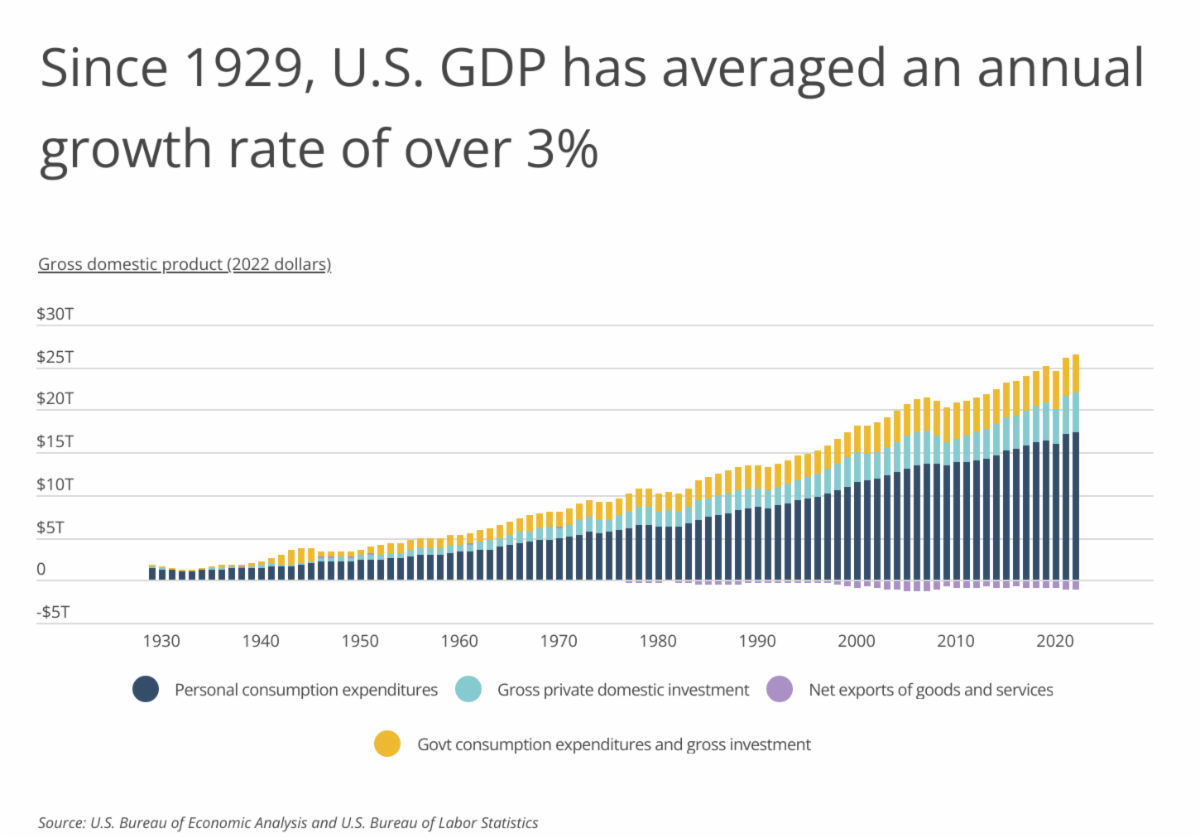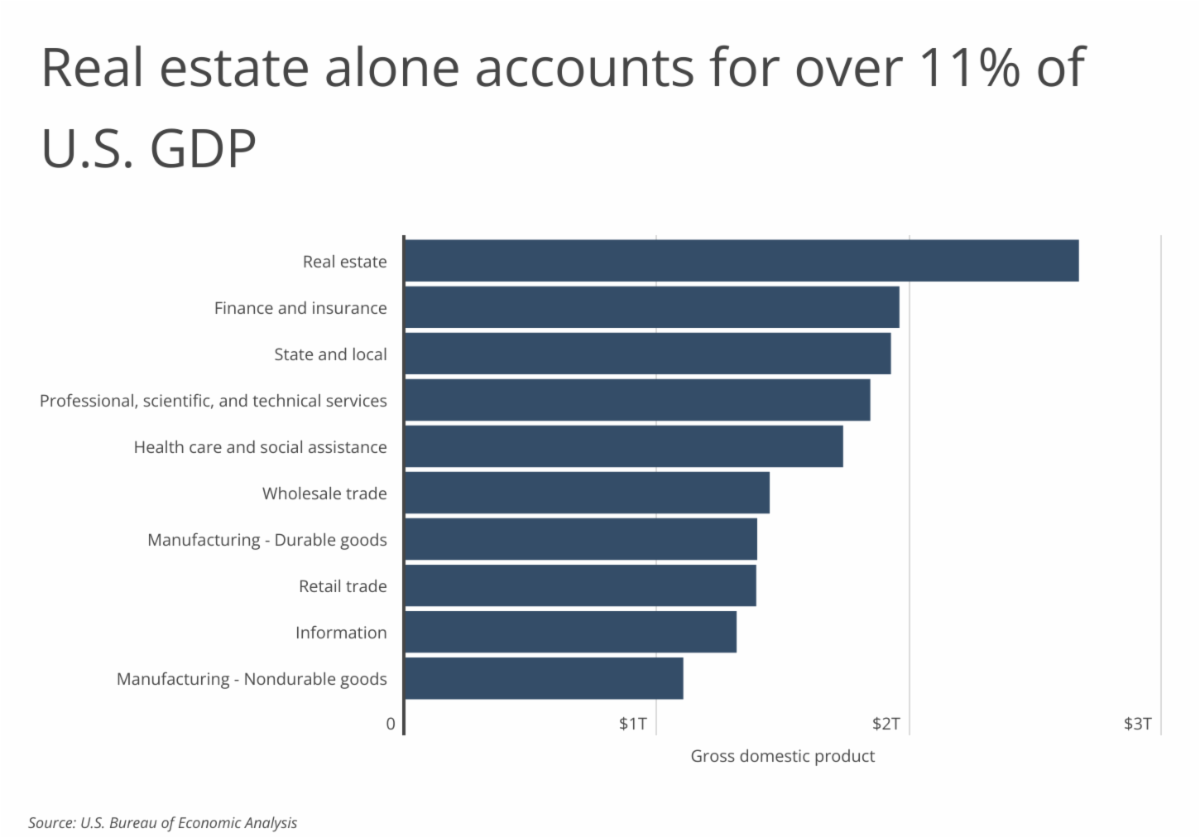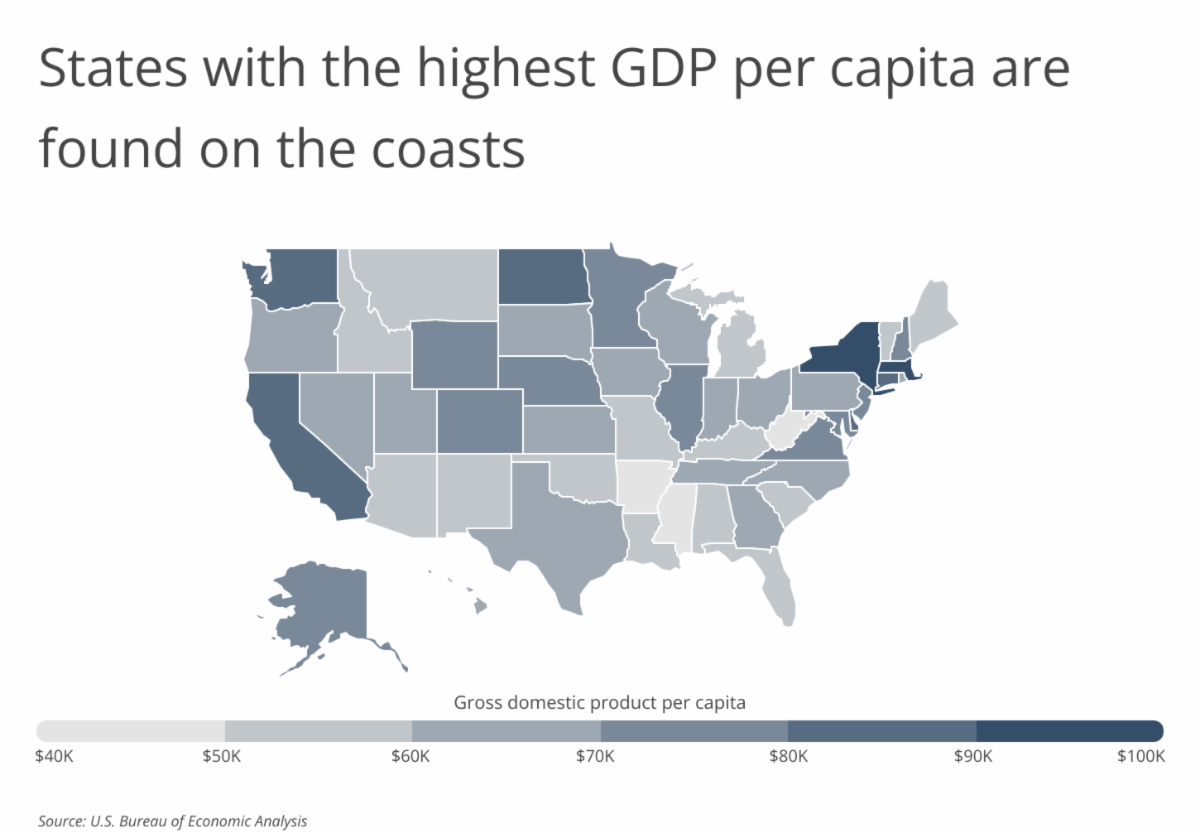Georgia Produces $64K of Economic Output per Resident
Thursday, March 9th, 2023
The COVID-19 pandemic dramatically shifted the economic landscape in the United States, and the effects are still lingering. These repercussions have been felt around the world, and their effects have altered local economies as well. In areas where remote work increased, considerations around transit, zoning laws, taxes, and broadband internet have taken center stage. In addition to changing office culture, the popularity of remote work is helping to transform the economic map as hundreds of thousands of Americans have left coastal cities like New York and San Francisco to live in more affordable locations in southern or mountain states. Meanwhile, after persistent supply chain disruptions, there has been a resurgent emphasis on domestic manufacturing, impacting certain areas of the country more than others.
With fluctuating economic changes across the U.S., it’s difficult to gauge how the country is recovering as a whole, as well as how local economies are faring. Fortunately, one way to measure the virus’s economic impact is through gross domestic product (GDP).
 GDP is the value of all goods and services produced in an economy, and in the U.S., its path since the onset of the COVID-19 pandemic provides the most basic measure of the virus’s impact on the economy. Although U.S. GDP has averaged an annual inflation-adjusted growth rate of over 3% since 1929, the pandemic caused historic drops in 2020. Real GDP dropped 2.7% from 2019 to 2020. Prior to 2020, the last time GDP fell was in 2009 during the Great Recession, decreasing 1.6% from 2008. And before that, a drop in GDP had not occurred since the early 1980s. While U.S. GDP in aggregate decreased from 2019 to 2020, gross private domestic investments decreased by 5.5% and the trade deficit grew by 7.1%. Personal consumption expenditures decreased by 3.1%, while government consumption expenditures and gross investment actually increased by 3.2%. Fortunately, the U.S. is showing signs of recovery, with a 5.7% increase in GDP from 2020 to 2021, and a smaller yet still noteworthy 1.1% increase from 2021 to 2022.
|




